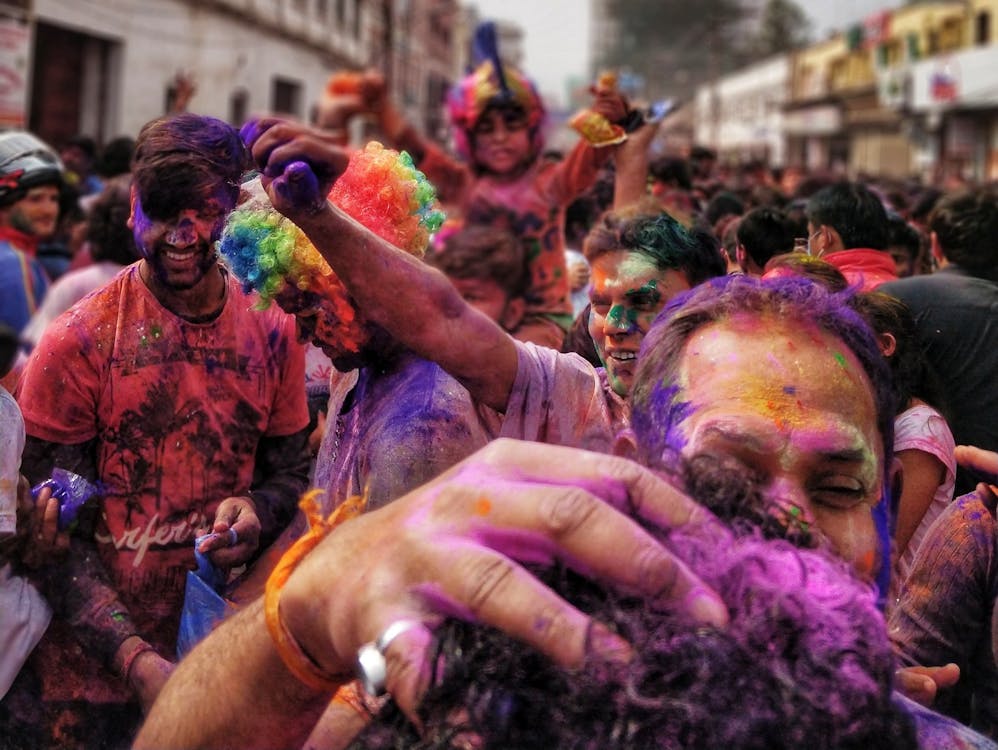A recent extensive genetic study uncovers surprising insights on the origins of India's population.
A recent study has shed light on the complex genetic makeup of the people in South Asia, particularly India, which hosts a diverse population with varying ethnicities, languages, religions, and customs. The study, conducted by researchers and published as a preprint on bioRxiv, is the largest modern whole-genome analysis of South Asians to date. It delves into the origins of India's Iranian ancestry, the settlement of ancient hunter-gatherers in the region, and the unexpected presence of a rich diversity of genes from Neanderthals and Denisovans.
The Indian population is believed to be a blend of three primary ancestral groups: indigenous hunter-gatherers, Iranian farmers who migrated between 4700 and 3000 B.C.E., and herders from the central Eurasian steppe who arrived around 3000 B.C.E. The study, led by population geneticist Priya Moorjani from the University of California, Berkeley, confirms the existence of these ancestral groups and expands on previous analyses by utilizing a larger sample size of modern Indian genomes, providing a more comprehensive understanding of the population's genetic composition.
To trace the origins of the Iranian-related farmers who entered India thousands of years ago, the researchers analyzed ancient DNA from populations with Iranian ancestry predating their migration to the region. Through simulations and comparisons with present-day Indian genetics, they identified farmers from Sarazm, an ancient agricultural center in present-day Tajikistan, as the best match. This finding suggests a two-way genetic exchange between Sarazm and ancient India, highlighting the interconnectedness of ancient societies.
Furthermore, the study revealed insights into prehistoric migrations and interactions. By estimating genetic mutations over generations, the researchers propose that modern Indians descended from a single migration out of Africa around 50,000 years ago. Surprisingly, modern Indians carry 1% to 2% of their ancestry from Neanderthals and Denisovans, displaying a higher diversity of archaic genes compared to other populations worldwide. The analysis of over 2700 Indian genomes uncovered a significant proportion of Neanderthal genes in the Indian population, suggesting complex interactions between ancient humans and their archaic relatives in the region.
The study raises questions about how these archaic genes made their way into the Indian population, speculating on scenarios such as interbreeding with a diverse Neanderthal population in India or unique genetic preservation due to geographical boundaries and cultural practices. The researchers emphasize the need for further genetic and archaeological investigations to unravel these mysteries, given the intricate nature of India's genetic heritage and the multitude of populations that have contributed to its diverse gene pool.
In conclusion, the study provides valuable insights into the origins and genetic diversity of the Indian population, highlighting the intricate tapestry of human migrations and interactions that have shaped the region's genetic landscape over millennia.
Source: https://www.science.org/content/article/where-did-india-s-people-come-massive-genetic-study-reveals-surprises
The Indian population is believed to be a blend of three primary ancestral groups: indigenous hunter-gatherers, Iranian farmers who migrated between 4700 and 3000 B.C.E., and herders from the central Eurasian steppe who arrived around 3000 B.C.E. The study, led by population geneticist Priya Moorjani from the University of California, Berkeley, confirms the existence of these ancestral groups and expands on previous analyses by utilizing a larger sample size of modern Indian genomes, providing a more comprehensive understanding of the population's genetic composition.
To trace the origins of the Iranian-related farmers who entered India thousands of years ago, the researchers analyzed ancient DNA from populations with Iranian ancestry predating their migration to the region. Through simulations and comparisons with present-day Indian genetics, they identified farmers from Sarazm, an ancient agricultural center in present-day Tajikistan, as the best match. This finding suggests a two-way genetic exchange between Sarazm and ancient India, highlighting the interconnectedness of ancient societies.
Furthermore, the study revealed insights into prehistoric migrations and interactions. By estimating genetic mutations over generations, the researchers propose that modern Indians descended from a single migration out of Africa around 50,000 years ago. Surprisingly, modern Indians carry 1% to 2% of their ancestry from Neanderthals and Denisovans, displaying a higher diversity of archaic genes compared to other populations worldwide. The analysis of over 2700 Indian genomes uncovered a significant proportion of Neanderthal genes in the Indian population, suggesting complex interactions between ancient humans and their archaic relatives in the region.
The study raises questions about how these archaic genes made their way into the Indian population, speculating on scenarios such as interbreeding with a diverse Neanderthal population in India or unique genetic preservation due to geographical boundaries and cultural practices. The researchers emphasize the need for further genetic and archaeological investigations to unravel these mysteries, given the intricate nature of India's genetic heritage and the multitude of populations that have contributed to its diverse gene pool.
In conclusion, the study provides valuable insights into the origins and genetic diversity of the Indian population, highlighting the intricate tapestry of human migrations and interactions that have shaped the region's genetic landscape over millennia.
Source: https://www.science.org/content/article/where-did-india-s-people-come-massive-genetic-study-reveals-surprises


Comments
Post a Comment